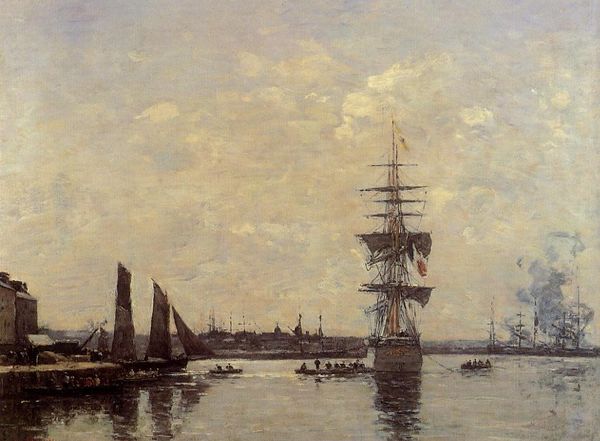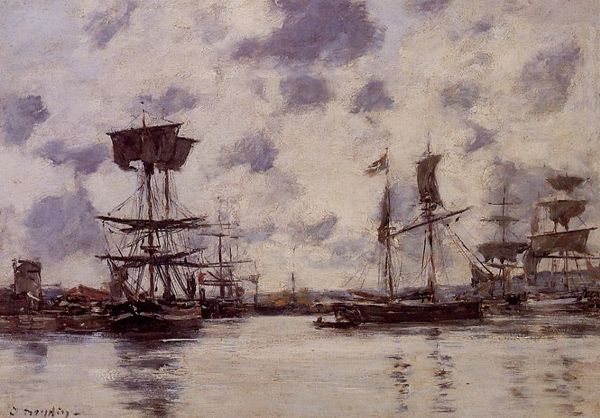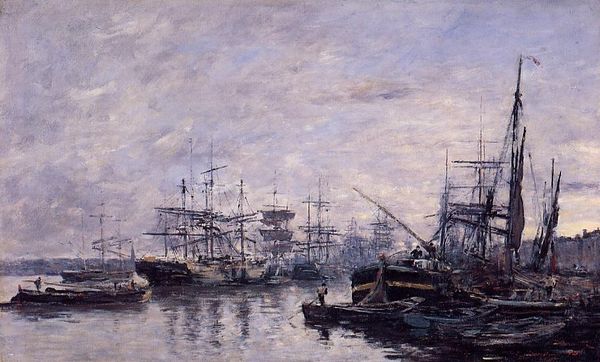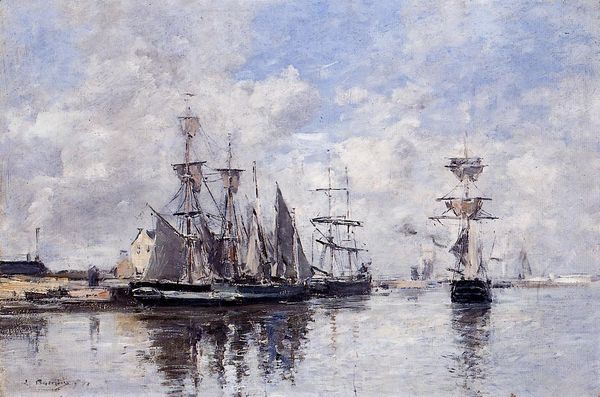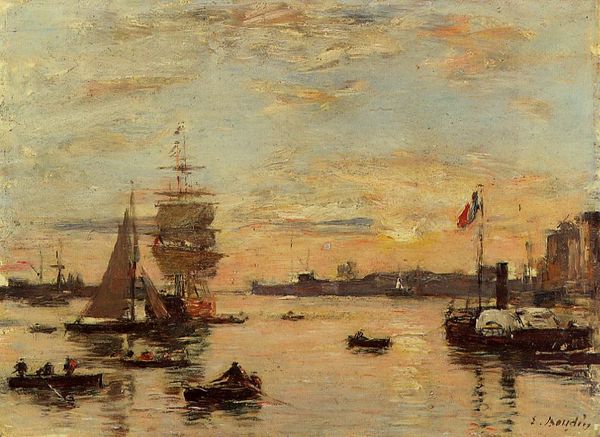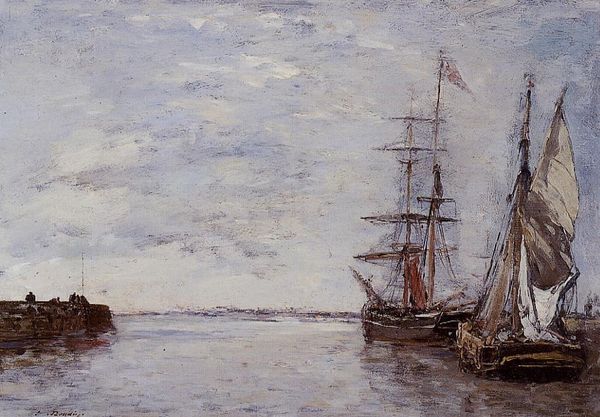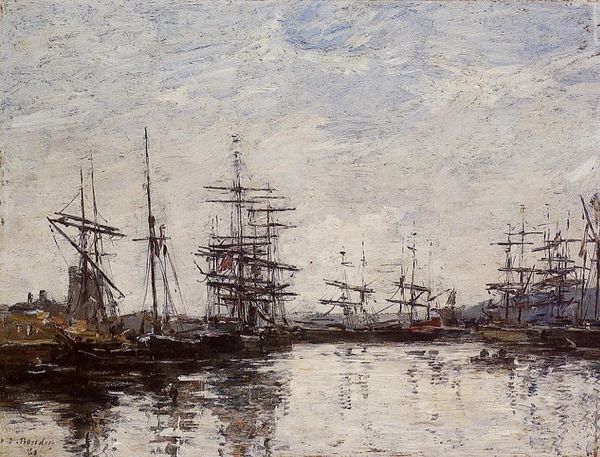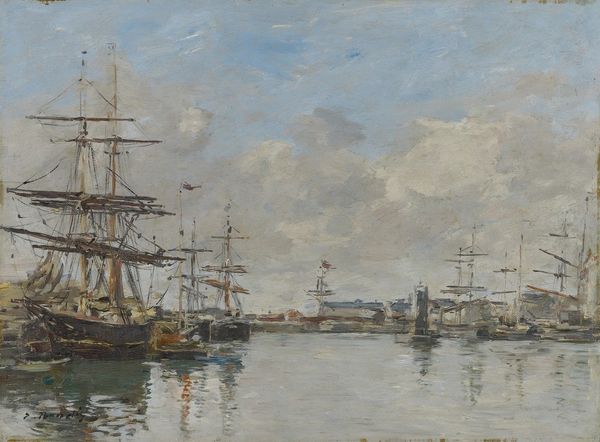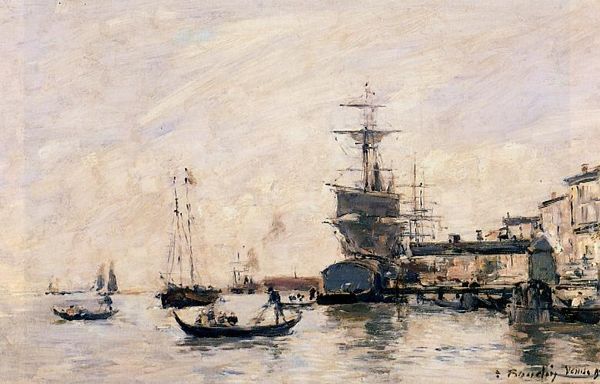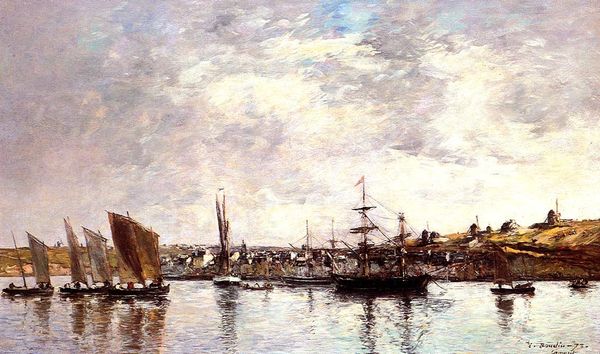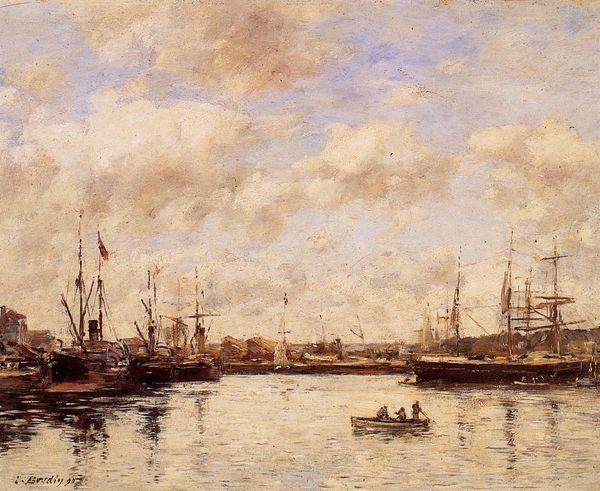
Copyright: Public domain
Editor: This is Eugène Boudin's *The Port of Bordeaux*, painted in 1875 using oil paint. The scene is dominated by the ships, but I find the sky very evocative and moody. What aspects of the composition strike you? Curator: Primarily, I'm drawn to how Boudin structures the space. Consider the verticality established by the masts against the horizontal expanse of the water. Do you perceive how the limited palette – the subtle gradations of grey, blue, and cream – contribute to the overall atmospheric effect? Editor: Yes, the limited colours unify the piece and give it a melancholic feel. But what about the brushstrokes themselves? They seem quite loose and expressive. Curator: Indeed. Notice the artist's confident handling of the oil paint. The broken brushstrokes not only define the forms of the ships and the reflections on the water, but also evoke a sense of movement and fleeting light. How does that compare to, say, earlier landscape paintings using meticulous detail? Editor: It is markedly different; earlier landscape paintings often prized minute details and clear outlines. Here, the emphasis appears to be on capturing an impression, a momentary glimpse of the port. Curator: Precisely. And let us think about this impression: It is not merely a rendering of boats and water; instead, we might read these hazy elements as symbolic of modernity’s transient state, of trade’s constant flow. Editor: That's a compelling point. Looking at it that way, Boudin uses formal elements to hint at a bigger picture. Curator: Indeed. Through this meticulous analysis of line, form and colour, our reading evolves. Thank you for illuminating those nuances for our audience. Editor: Thank you. I’ll definitely view impressionist art differently now.
Comments
No comments
Be the first to comment and join the conversation on the ultimate creative platform.
